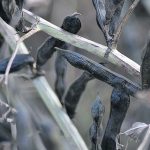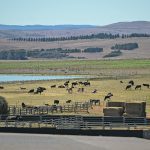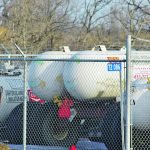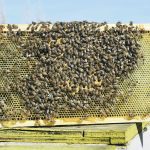A $4.5 million project will explore how queens and nucleus colonies can be over-wintered to avoid importing them
WINNIPEG — Every spring, Canadian beekeepers deal with the same unpleasant problem. A percentage of their hives fail to survive the winter — possibly 20 to 40 per cent — so they import queen bees and small nucleus colonies from New Zealand, Australia or Hawaii to replace them. Bee experts from British Columbia, Alberta and […] Read more Livestock Management
Livestock Management

Avian flu is back
As migratory birds wing their way south, they’re leaving cases of bird flu in their wake across the country. The problem is especially acute in British Columbia, where producers, industry groups and governments are trying to keep the seasonal problem from worsening. Eight premises are currently infected with H5N1 highly pathogenic avian influenza (HPAI) in […] Read more

Study aims for finishing benchmarks
Feedlot and backgrounding sectors called to participate in a two-part project that looks for insight on finishing practices
If you’re a feedlot or backgrounding operation manager with an hour to spare, a group of Canadian researchers wants your help. The team behind the Canadian Feedlot Benchmark Study says their survey, now under way, will help create a national benchmark database of backgrounding and finishing practices used in herds across Canada. The stated goal […] Read more
Frost-damaged fababeans may make suitable hog feed
Results of a Canadian research project show that pork producers may have a new, safe and low-cost feed source. Researchers with the University of Alberta, as well as the University Autónoma de Baja California and Mexicali, México, set out to establish the benefits of frost-damaged fababeans in pig diets. They found that feeding frost-damaged fababeans […] Read more

Genetic testing useful for selecting breeding animals
The Human Genome Project should receive partial credit for giving us the technological advancement and innovation necessary to conduct widespread genetic research. The project, which completed the first sequence of the human genome, finished in 2003. This massive undertaking led to the development of rapid and automated genetic sequencing. It has trickled down into many […] Read more
Livestock health emergencies require service evolution
Changes are happening at Animal Health Canada, which announced updates, including work on training and response programs and additions to its Emergency Management division staff. Erica Charlton, director of the division, delivered updates at the recent AHC forum in Ottawa. Charlton mentioned a new depopulation training project that is underway in partnership with ACER consulting. […] Read more

Australia cashes in as U.S. cattle herd shrinks
A slump in U.S. beef production results in record Australian meat exports and big bucks for processors and producers
COOMA, Australia (Reuters) — In a refrigerated room, around two dozen employees in hats, gloves and blue plastic aprons carve and pack carcasses into boxes within minutes of their slaughter. The Monbeef slaughterhouse, owned by Bindaree Food Group and located about 100 kilometres south of Canberra, Australia, processes approximately 200 cattle a day, up from […] Read more
Feed testing the first step in planning winter feeding program
It’s that time of year, when you will see lots of articles about the importance of feed testing. I would certainly agree that feed testing is an important step in planning winter feeding programs for our cow herds. However, it is just the first step of the process. We need to take the information from […] Read more

Anhydrous ammonia boosts forage
If done safely, ammoniated forage can encourage livestock to eat more and result in better nutrition and less spoilage
Glacier FarmMedia – Anhydrous ammonia has long been a critical input for Manitoba’s field crops — now it’s also increasingly finding its way onto livestock operations as a feed enrichment strategy. Molasses has historically been used to enrich lower value forages, but when used safely, farmers are finding anhydrous ammonia can be a better option. […] Read more
USDA pressured to back off on bird flu measures
REUTERS — The U.S. Department of Agriculture weakened an emergency order last spring designed to prevent the spread of bird flu among the nation’s dairy cattle after pushback from state and industry officials, according to state and federal records seen by Reuters. The communications show how the early federal response to the U.S. bird flu […] Read more



 Livestock Management
Livestock Management


